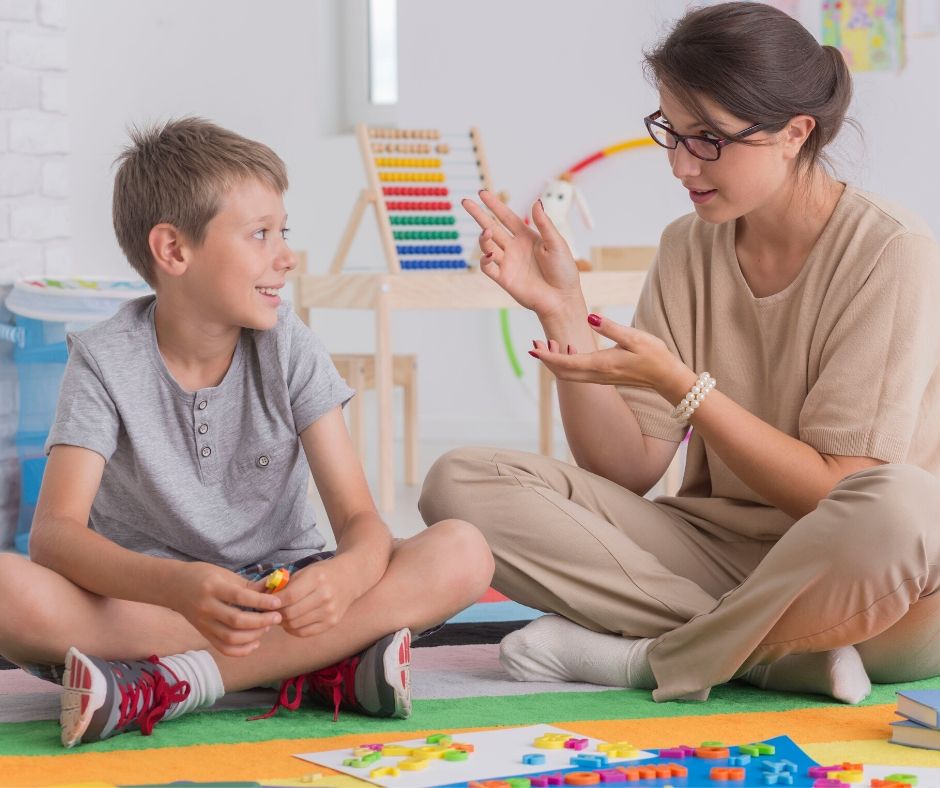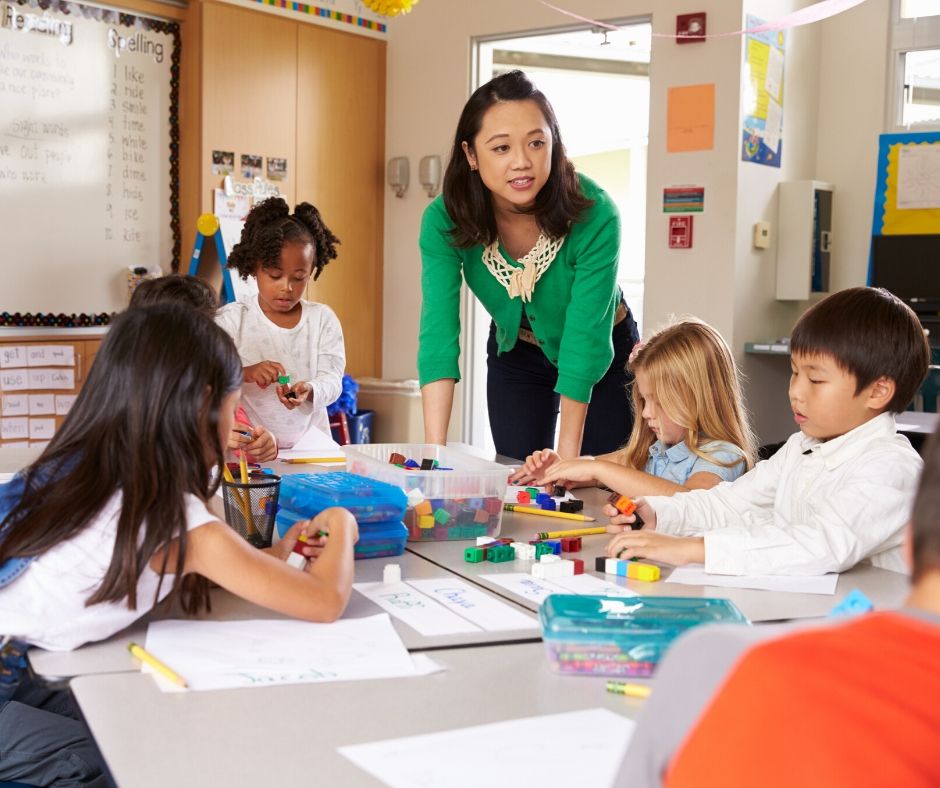What do we know about how people learn?
According to a recent study by the American Psychological Association, at least 90% of teachers believe that people learn better if they are taught in their predominant learning style.
For decades, teachers have subscribed to the idea that students differ in their learning styles – that visual learners need to see information in order to understand, while auditory learners depend on listening and speaking, read/write learners rely on reading and taking notes and kinesthetic learners process information best with hands-on activities.
Yet despite widespread belief in the learning styles hypothesis, there is a lack of scientific evidence to support it.
Consequently, it has sparked debate among educators, psychologists, and neuroscientists alike. So if all this is just theory, what do we know about how people learn?

Ability or preference?
As educators, we should be prepared with tools and techniques to support students of diverse backgrounds and interests.
It is important to note, however, that ability is not the same as preference. Just because students differ in their inherent abilities, does not necessarily mean they will differ in their learning styles or preferred study methods.
So we shouldn’t stress over trying to adjust our teaching style to accommodate each student’s profile.
We should also be careful not to classify each student as one kind of learner or another, because research has shown that learning may not be so black and white after all.
Instead, we can vary our teaching methods, striking a balance between challenging our students and catering to their specific needs. In preparing for the new school year, let’s take a moment to consider the science behind learning.

What can we do to improve our teaching?
Surveys have shown that a majority of teachers perpetuate learning styles theories without digging deeper into more substantiated ideas about learning.
In response to this overwhelming commitment to an unproven concept, Ulrich Boser, founder of The Learning Agency and author of Learn Better, has made it his mission to train today’s teachers to better serve their students.
Metacognition: thinking about thinking
Boser’s research has shown that metacognition – or thinking about thinking – is a useful strategy for learning.
In other words, if we take the time to really try to understand how we learn, we start to develop more effective study strategies.
We could invite our students, too, to reflect on their own study habits.
By engaging in a sort of self-monitoring, they can better understand their own cognitive processes, or why some subjects may be easier for them to learn than others.
We can ask students to consider their individual strengths and weaknesses, rather than teaching solely to their strengths.
With this, Boser and his team found that a healthy amount of struggle is necessary in order to master something new. He suggests we talk to ourselves while studying, explain to others what we’ve learned, or quiz ourselves on a routine basis.
Analogies
We can also organize information with analogies in order to relate new ideas to our previous knowledge.
These practices, says Boser, spark creativity and help us to retain information.
Active learning
One study strategy endorsed by researchers across the board is that of active learning.
If a student explains the text to himself while reading, for example, restating key ideas in his own words, later he is more likely to remember what he has read.
Testing
In the same way, practice testing has proven more effective than rereading, as it promotes better recall of information.
Spaced practice
Even better is spaced practice, or repetition over time, as it fosters long-term retention of information.
Teachers can incorporate these active learning techniques in both classroom activities and homework assignments.

Fixed Mindset vs. Growth Mindset
Growth Mindset: the ability to improve
All things considered, our primary goal as educators should be to create a positive, stimulating learning environment for our students. Psychologist Carol Dweck, professor at Stanford University and author of Mindset, suggests that when a teacher shows confidence in a student’s ability to improve, the student will in turn feel greater self-confidence and motivation.
In her analysis of teaching and learning practices, Dweck explains the difference between a fixed mindset and a growth mindset.
According to Dweck, educators should promote a growth mindset in their approach, or the idea that each student is capable of improving; that abilities can be developed with time and practice.
As opposed to a fixed mindset, or the idea that each student has a specific level of intelligence and is only capable of understanding concepts within a limited frame of reference or ability.
Instead, Dweck argues that if a student is taught to believe in her ability to improve, she is likely to put more effort into learning and will ultimately perform better.

Fixed Mindset: a barrier to learning
Alternatively, if an educator groups students into different learning styles or other categories, this may prove more harmful than beneficial, as it teaches students to approach an issue from one predetermined perspective, rather than to consider their options.
In other words, if students are divided into the same routine groups day after day, they begin to develop a fixed mindset or the idea that they do not belong anywhere else, that they cannot possibly achieve anything more.
This kind of essentialist thinking may in effect cause students to see the world outside the classroom as marked by social divisions and hierarchies – a perspective that can be largely detrimental.

Multimodal Thinking
The best learners are multimodal thinkers
Further research has shown that structured creativity, or systematic work, leads to better outcomes than unconstrained exploration.
Essentially, teachers should offer concrete options for learning, providing students with a choice of a select number of activities. That way, students are empowered to make a decision, but not overwhelmed by endless options.
Daniel Willingham, a cognitive psychologist and professor at the University of Virginia, discusses the importance also of multimodal thinking:
“Teachers should indeed think about the modality in which they present material, but their goal should be to find the content’s best modality, not to search (in vain) for the students’ best modality.”
Put simply, “If the teacher wants students to learn and remember what something looks like, then the presentation should be visual.”
Willingham concludes that the best learners are multimodal thinkers. Effectively, once a student has an understanding of the material in one format, she should try to understand it in a different format. This will really test her comprehension.

Individualize and pluralize teaching
Similarly, Howard Gardner, a longtime professor at the Harvard University Graduate School of Education, who in the 1980s popularized the idea of multiple intelligences, suggests we both individualize and pluralize our teaching.
For Gardner, “All of us exhibit jagged profiles of intelligence,” and “strength (or weakness) in one intelligence does not predict strength (or weakness) in any other bits of intelligence.”
For this reason, Gardner proposes that we teach materials in several ways (through stories, works of art, diagrams, role play, and so on). Then we can reach students who learn in different ways while conveying what it means to understand something well.
If we teach only in one way, this may indicate our own limited understanding of the material.
Enthusiasm is contagious
Ultimately, there is significant value in a teacher’s own enthusiasm. When a teacher shows a true interest in the subject at hand, students are more likely to want to learn.
If anything, it is important to teach in a way that feels natural to us, so that the learning process is more enjoyable for everyone involved.

Create inclusive classrooms
In summary, as educators, we should incorporate a variety of teaching and learning strategies into our classrooms, regardless of our student audience.
We need not totally disregard the learning-styles hypothesis, but rather we can design lessons to engage multiple learning styles, bits of intelligence, or senses.
By varying our teaching methods, we can better hold the attention of our students, no matter their preconceived preference or ability. And whenever possible, we can certainly offer individualized attention to those students who are struggling.
If we think too much in terms of styles, however, we may be doing more harm than good.
Certainly, by now, history should have taught us the risks associated with categorical thinking.
Let’s debunk potentially harmful stereotypes, starting with an inclusive approach to teaching and learning.
What’s your take on learning styles theories?
Have you tried implementing any of these teaching and learning strategies in your classroom? What other techniques would you suggest? Share your thoughts in the comments below.

Hi!
Nice and very useful article. As teachers, we should think more about learners, students and how they can develop strategies to learn better.
Thank you so much,
Maria Luísa Veiga
Hi Maria Luisa,
Thanks for your comment. I too have found that it helps to step back every now and then and rethink strategies for sharing information and motivating students.
Best of luck to you!
Robin
Hi !
I agree with the content of the article. A teacher has an important role in a classroom, so knoledge of learning styles helps to develop strategies to learn better.
Thank you a lot,
Gioia Di Pede
Hi Gioia,
Glad to know you’ve enjoyed reading about different approaches to teaching and learning. Thanks for your note!
Best of luck,
Robin
I really liked your article! How to teach our students has always been a challenge for us teachers and it’s good to know the results of new research on the issue. I teach in mixed ability class so I never use one teaching methodology. I try to vary my teaching approaches as well as the products from the students. It’s very useful though to have in mind the various teaching preferences of the students so to adapt to the requirements of any student group and have the best possible results
I do agree with the content of this article.We must vary our teaching methods so to be able to aware all the studends interrestings.Thanks a lot for sending me.
I agree whit this. We need to teach with student’s interest. Thanks a lot
I have read your article with pleasure and curiousity. Indead, in our teach activity is important to know about learning styles and how can to use this, eficiently, for our students. Thanks for your useful information! Be safe and many achievements!
Hello, I read the article very carefully and I completely agree with the idea that teachers should have different approaches and presentations of the topics that students should acquire in their classes.
A varied presentation of themes enriches the students’ repertoire and creates an environment of inclusion.
thank you, and all the best. Hugo Bento
Thank you !
Your article was explicit and included most of the methods we as teachers of English use in order to make our lesson interesting.I have been teaching English for many years to Greek teenagers (aged 16 to 18) who,most of them have taken their Certificates in the English language at an early age,,, You can imagine how difficult it is to persuade a teenage girl /boy that a language is a living thing and that knowledge never ends,,.I am sure that only Greek Lyceum State school teachers fully understand what i have been talking about… Anyway I am trying to be inventive, enthusiastic,always ready to bridge the genaration gap because I love kids, foreign languages and the freedom to communicate with teenagers using various methods and paths that will help them enjoy their trip in the english language and culture!
We all have individual differences. These must be taken into account with regard to school learning. I loved the article and agree that teacher enthusiasm promotes better student learning.
I really liked your article. I agree that we need not totally disregard the learning-styles hypothesis, but rather we can design lessons to engage multiple learning styles, bits of intelligence, or senses.
I think that it’s really important to teach in a way that the learning process is more enjoyable for everyone.
In the letter I received you raise many interesting subjects which can be discussed and debated at length.
I read the material from your article “Learning Styles: Fact or Fiction?”, in which I notice that it is based on the theories and practices of scientists from Stanford and Harvard universities.
In my long-term practice (more than 27 years), in the organizations in which I have worked and work, we touch on many of these topics.
We have used different approaches in discovering the right way of learning for each student.
I completely agree with the conclusions drawn in the article.
When asked – What are your thoughts on learning style theories? – I can only answer that we use one-week introductory courses on key competences according to the European framework, in which we make each trainee find his own right approach to learning, which helps a lot in subsequent training in a given profession or specialty.
I am a proponent of innovation in this area and we are happy to discuss these topics.
Well that’s my reaction in the comments section!